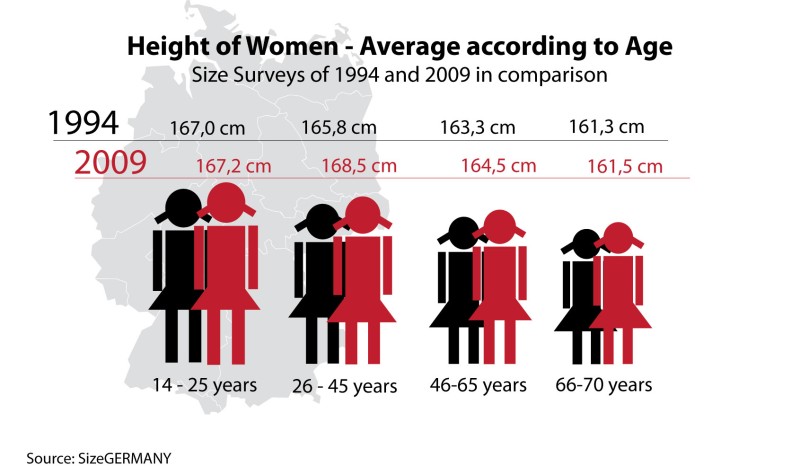
Customised sizing development for composite materials
The latest survey by SizeGERMANY reveals that as body size increases, the proportions become less homogenous.

10th November 2014
Innovation in Textiles
|
Boennigheim
People in Central Europe are getting taller. For example, in the last 130 years, the average German male has shot up in height by about 16 cm, an increase of over 1 cm every decade.
Clothing manufacturers and retailers aim to offer clothing that fits well for as many people as possible. To keep up with the constant changes in body shape, they have to adapt their pattern designs.

This is done with the help of body measurement tables drawn up on the basis of representative size surveys. In Germany, the Hohenstein Institute in Boennigheim has been carrying these out regularly since 1957.
The results of the last SizeGERMANY representative size survey were published in 2009. The survey was carried out by the Hohenstein Institute and Human Solutions in cooperation with industry partners.
The body measurements of 13,362 men, women and children, aged between 6 and 87, were recorded at 31 locations all over Germany. Participants were measured using the latest contactless 3D scanner technology, once seated and in three different standing positions.

This provided 44 body measurements such as hip and chest circumference for the clothing industry and 53 measurements for use in technical ergonomics. The measurements were linked to socio-demographic data, such as age and gender. They have now been made available to SizeGERMANY's industry partners for further evaluation via a special data portal.
For women, the last size survey in Germany before SizeGERMANY took place in 1994. In the female population between the ages of 14 and 70, the following changes were recorded by comparison with average values – regardless of garment sizes – for ladies' outerwear (DOB). For women, there was a shift towards larger garment sizes.
-Height: Increase of approx. 1.0 cm
-Bust circumference: Increase of approx. 2.3 cm
-Waist circumference: Increase of approx. 4.1 cm
-Hip circumference: Increase of approx. 1.8 cm
For men, the last size survey before SizeGERMANY took place in 1980. However, the results of those measurements were never implemented in practice, because it was not possible to reach agreement within the industry on a new sizing system for men's and boys' outer wear (HAKA). In effect, this meant that, until the results of SizeGERMANY were released, body measurement tables were based on data from the 1960s.

In addition, for the first time the tables include three body heights (regular, short, long), as has been used for decades for women. In the male population between the ages of 16 and 70, the following changes were recorded by comparison with average values from 1980 – regardless of garment sizes. It shows that for men, too, there was a shift towards larger garment sizes.
-Height: Increase of approx. 3.2 cm
-Chest circumference: Increase of 7.3 cm
-Waist circumference: Increase of 4.4 cm
-Hip circumference: Increase of 3.6 cm
A comparison of the stated garment size and the size measured according to the volunteers' measurements revealed an interesting fact about the upper body: for the smaller sizes 32-40, the purchased sizes and the sizes based on body dimensions more or less matched.

For the larger sizes of 44 or over, in many cases the garment being sold was up to two sizes smaller than the size based on body dimensions.
The trend is clear – the body shape of the population is changing towards a bigger build. At the same time, as body size increases, the proportions become less homogenous.
This means that separate measuring parameters are required to ensure that clothing for the bigger-build market segment fits well.

Business intelligence for the fibre, textiles and apparel industries: technologies, innovations, markets, investments, trade policy, sourcing, strategy...
Find out more